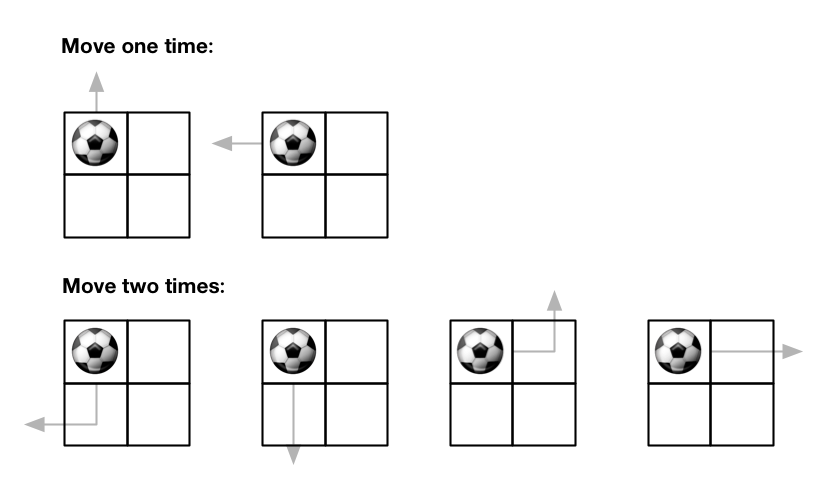576. Out of Boundary Paths
Problem description:
There is an m x n grid with a ball. The ball is initially at the position [startRow, startColumn]. You are allowed to move the ball to one of the four adjacent cells in the grid (possibly out of the grid crossing the grid boundary). You can apply at most maxMove moves to the ball.
Given the five integers m, n, maxMove, startRow, startColumn, return the number of paths to move the ball out of the grid boundary. Since the answer can be very large, return it modulo 109 + 7.
Example 1:

1 | Input: m = 2, n = 2, maxMove = 2, startRow = 0, startColumn = 0 |
Example 2:

1 | Input: m = 1, n = 3, maxMove = 3, startRow = 0, startColumn = 1 |
Constraints:
1 <= m, n <= 500 <= maxMove <= 500 <= startRow < m0 <= startColumn < n
Solution:
Naive solution: check 4 directions
Improve: memorization to reduce duplicate calculation when we reach to the same spot with same moves left.
First idea we could come up with a naive solution to calculate we have moves left when we walk the array like the following.
1 | if maxMove < 0: |
When we reach to a new position, we need to check 4 directions
1 | a = solve(i-1, j, move-1) |
However, the above naive solution takes O(4^n)
We could add a dp array to keep the calculation that we’ve already done. The idea is that when we reach to a specific position with specific moves left, the amount of out of boundary ways are fixed.
Situations like [ i = 1, j = 1, max_moves = 1] will be calculated many times, e.g.:
- max_moves = 2 and coming left from
(1, 2) - going right from
(1, 0) - coming down from
(0, 1) - going up from
(2, 1)
So ,why to solve 4 times for the same [ i = 1, j = 1, max_moves = 1]. Better to memoize/store the computed result in some data structure and return the result directly next time without actually computing [ i = 1, j = 1, max_moves = 1] again.
1 | class Solution: |
time complexity: $O(mnmoves)$, $O(n^3)
space complexity: $O(mnmoves)$
reference:
related problem: